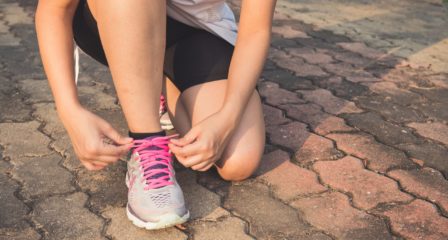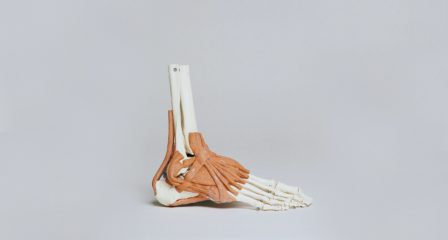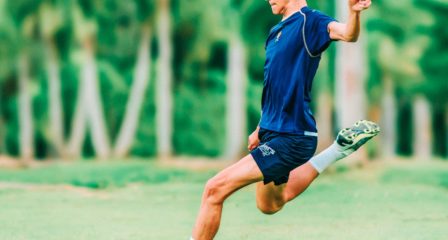The Injury Clinic physiotherapist and strength and conditioning coaches are always staying up to date with the latest research and findings to make sure that they deliver the most effective evidence-based treatment.
Staying up to date with current research is very important for practitioners as it provides:
- Evidence-based information on the effectiveness of treatment/exercises to ensure it is always relevant.
- Their patient care is always of a high professional standard as it aids in informed clinical decisions supported by research.
Current research articles, their summaries and key findings can be found below:
Hamstring injuries in England and Wales elite men’s domestic cricket from 2010 to 2019 (Goggins et al., 2022):
Summary:
- Thigh and hamstring injuries have been reported to be one of the most frequently occurring injuries in elite men’s cricket.
- Previous research into cricket injury rates have shown that there are different injury rates between batsmen and bowlers, depending on the format of cricket.
- The aim of this review was to examine hamstring injury risk factors for elite men’s cricket in England and Wales.
Results:
- One-Day cricket had the highest incidence of hamstring injuries over multi-day and T20 cricket, with the higher intensity leading to more hamstring injuries in batsmen (most commonly running between wickets) compared to multi-day cricket.
- In the longer format of the game, bowing (specifically in the delivery stride of the follow through) had the highest rate of hamstring injuries. These results show that match intensity has little impact on bowling hamstring load/ injury rate, but it does for batsmen.
- Additionally, hamstring injury rate was the highest during the first month of the season, illustrating the need for greater offseason conditioning at elite and community level cricket.
Impact of ski geometry data and standing height ratio on the ACL injury risk and its use for prevention in recreational skiers (Ruedl et al., 2022):
Summary:
- In alpine skiing, the knee joint is the most prevalent anatomical injury site, with ACL injuries making up the most common diagnosis.
- A large number of lower limb injuries sustained during skiing are related to the ski acting as a lever to bend or twist the leg.
- A retrospective questionnaire-based, case controlled study of ACL-injured and uninjured skiers was conducted during 6 consecutive winter seasons.
- Ski geometry data was recorded for each participants’ skis, including ski length, side-cut radius, widths of the tip, waist and tail.
- Standing heights at the front and rear components of the ski binding were measured, and a ratio between the two was calculated.
Findings:
- A total of 1817 recreational skiers participated in this study, of whom 392 (21.6%) sustained an ACL injury
- Reduced ski length, narrower ski tip width, lower rear standing height and a lower standing height ratio (ie, rear component of the ski binding is more elevated compared with the front component) were associated with a reduced likelihood for ACL injury.
A Subject-Tailored Variability-Based Platform for Overcoming the Plateau Effect in Sports Training: A Narrative Review (Gelman et al., 2022):
Summary:
- The plateau effect is from a compensatory body adaptation mechanism that is described within exercise and sports and is applied to muscle and cardiovascular performance.
- Muscle strength and fatigue will adapt differently after training towards plateau for several weeks to reach plateau improvements.
- Training three to four times per week till plateau effects will engage improvements towards plateauing. Increasing in muscular strength and endurance. Improvements also seen in the cardiovascular system and respiratory system, ultimately leading to an increased VO2max.
- There are neural adaptations which greatly impact the plateau effect of muscular strength and muscular endurance. Strength/resistance training determines the amount of muscle fibers being used, therefore, the motor recruitment is determined by the muscular force output demand.
Findings:
- The plateau effect is a physiological determinant to training at sub-maximal to maximal intensity.
- Plateau can be visually represented as critical power output, lactate threshold, VO2max and other physiological tests.
- Training up to 2-3 times per week for 4-weeks till plateau will show improvements to the physiological systems which will increase plateau levels. In other words, training at and maintaining VO2max will increase the levels of plateauing.
- Training methods consist of High Intensity Interval Training combined with continuous training. This allows athletes to perform at sub – maximal to maximal intensity, inflicting lactate threshold and a near VO2max in order to increase the plateau effect.
Gelman R, Berg M, Ilan Y. A Subject-Tailored Variability-Based Platform for Overcoming the Plateau Effect in Sports Training: A Narrative Review. International Journal of Environmental Research and Public Health. 2022; 19(3):1722.
Goggins, L., Langley, B., Griffin, S., Peirce, N., McKay, C., Stokes, K., & Williams, S. (2022). Hamstring injuries in England and Wales elite men’s domestic cricket from 2010 to 2019. Journal of Science and Medicine in Sport.
Ruedl, G., Posch, M., Tecklenburg, K., Schranz, A., Greier, K., Faulhaber, M., Scher, I., & Burtscher, M. (2022). Impact of ski geometry data and standing height ratio on the ACL injury risk and its use for prevention in recreational skiers. British Journal of Sports Medicine, 56(19), 1104–1109. https://doi.org/10.1136/bjsports-2021-105221



